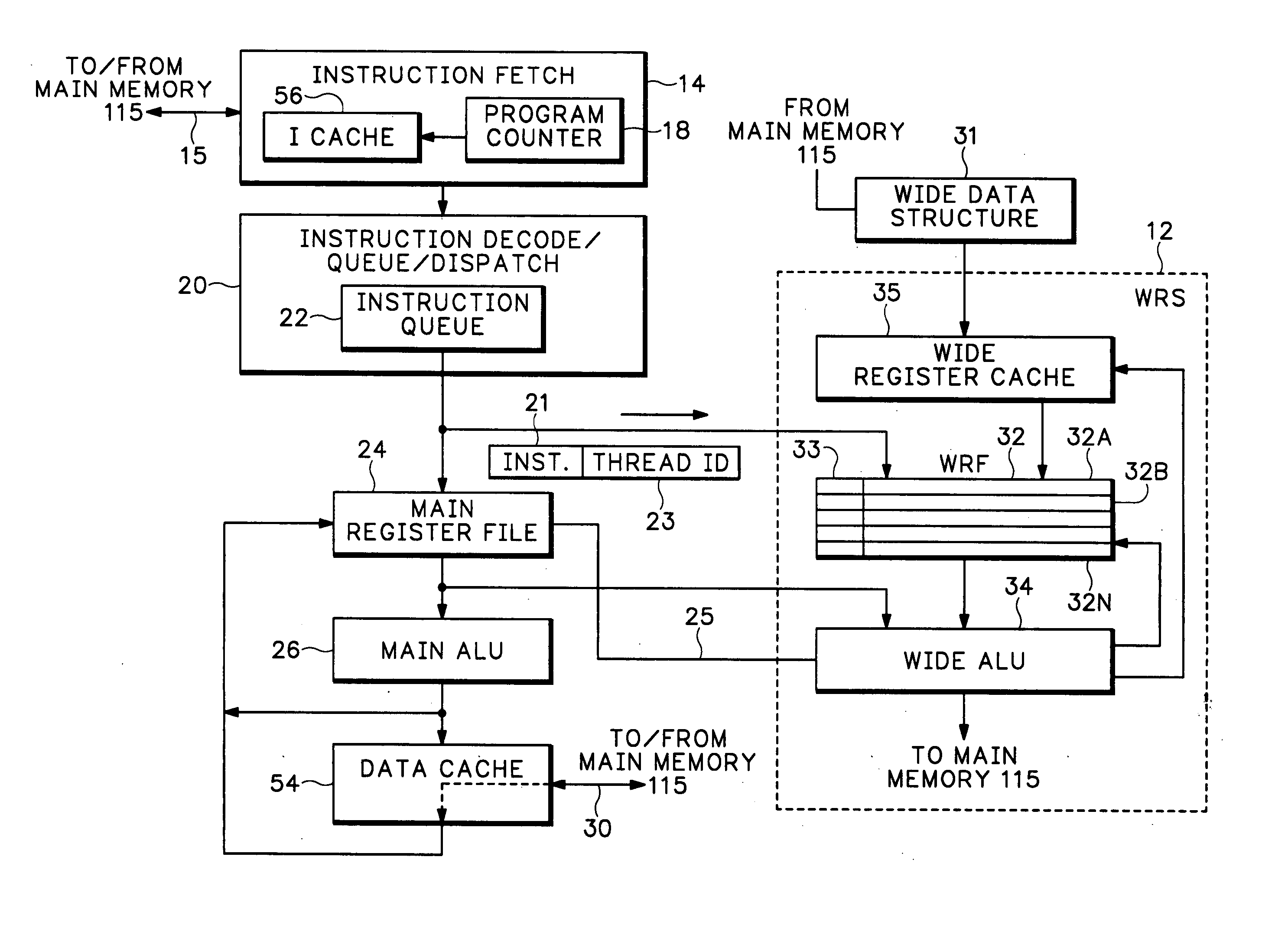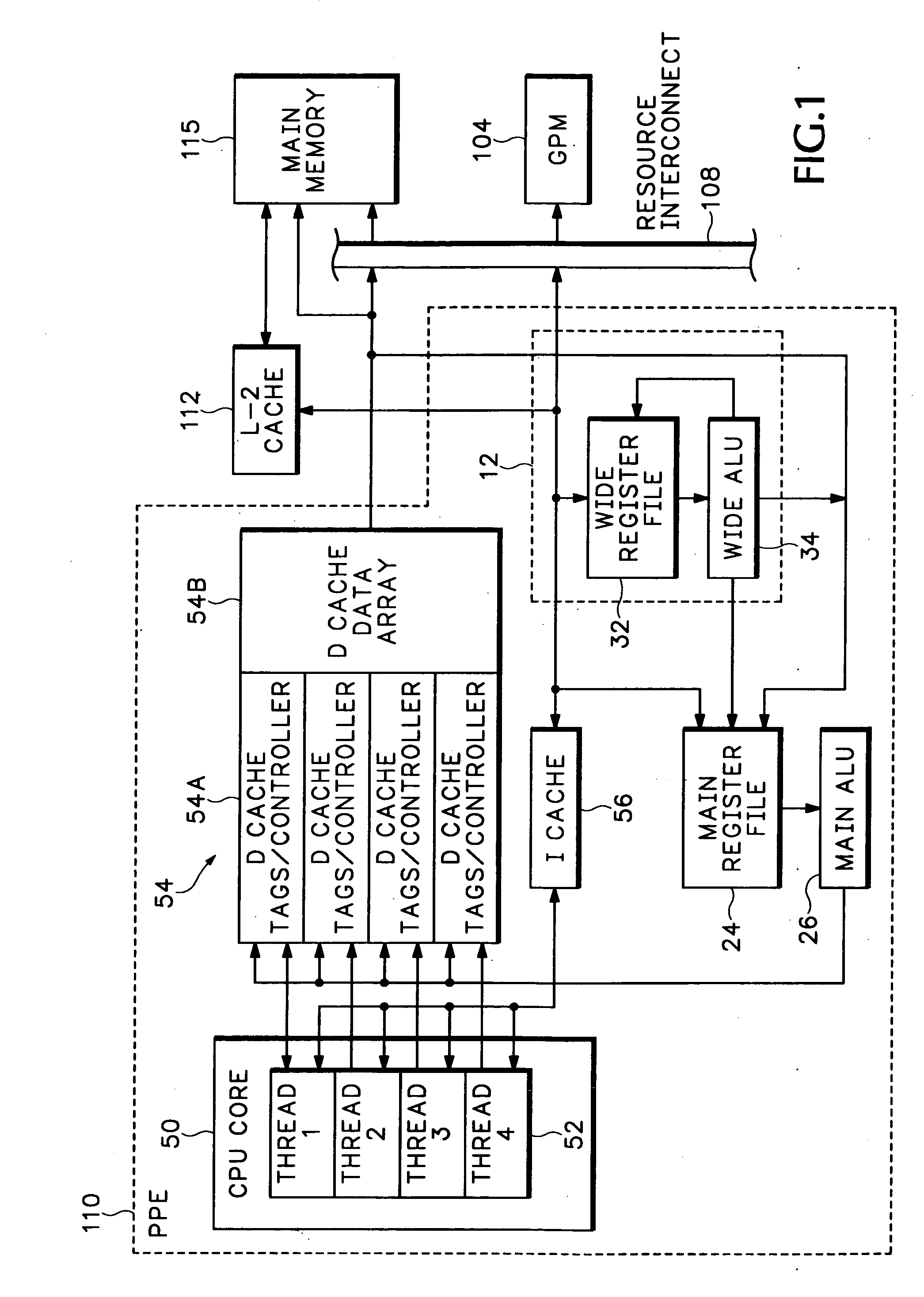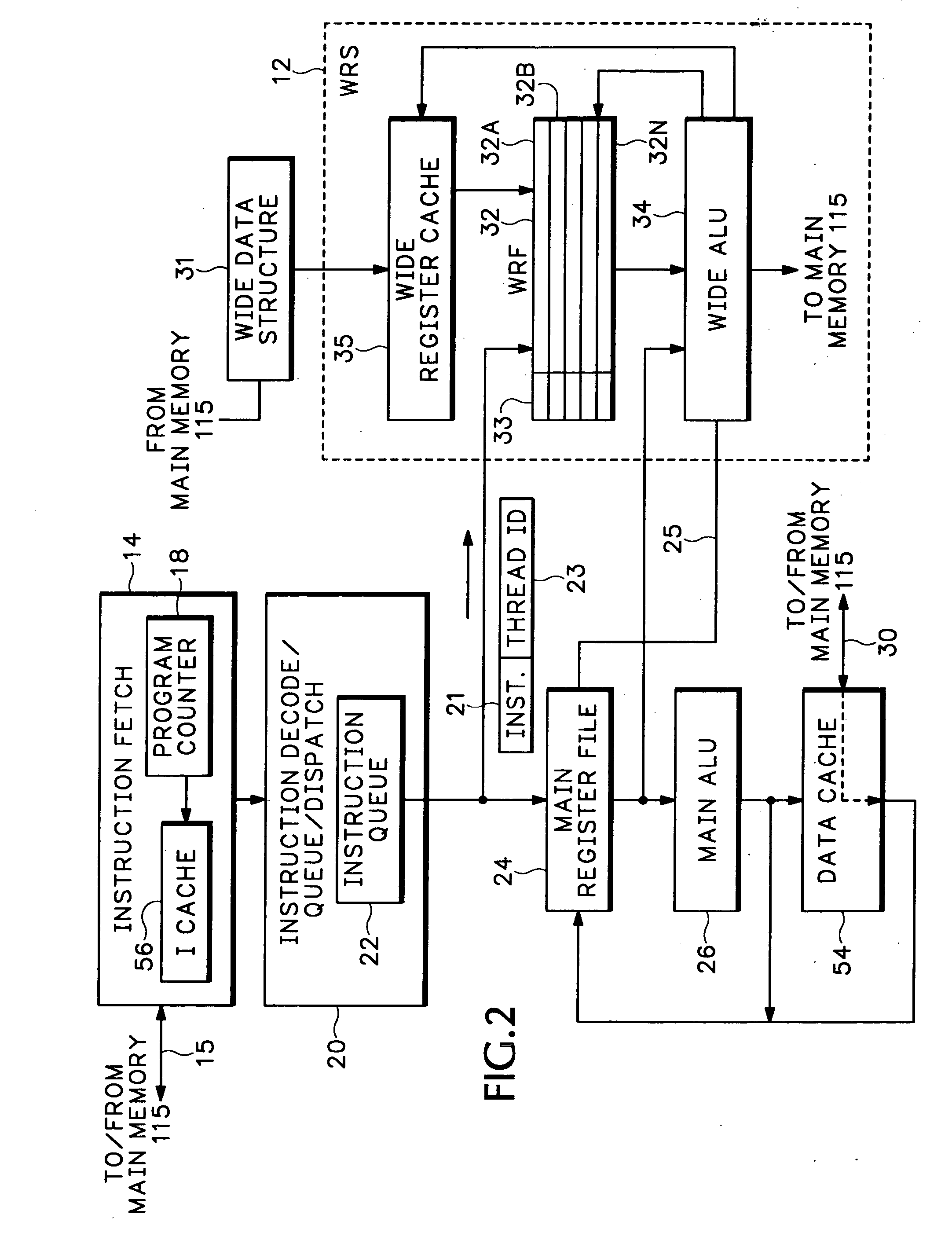Packet processor with wide register set architecture
- Summary
- Abstract
- Description
- Claims
- Application Information
AI Technical Summary
Benefits of technology
Problems solved by technology
Method used
Image
Examples
Embodiment Construction
[0015]FIG. 1 shows a block diagram of a Wide Register Set (WRS) 12 used in a multi-threaded Packet Processing Element (PPE) 110. The WRS 12 can be used in any processing device that needs to process both normal width data and some amount of wider width data. The WRS 12 includes a wide register file 32 that includes multiple wide registers that are each wider than registers in a main register file 24.
[0016] The main register file 24 is used for most primary operations in the PPE 110 and the wide register file 32 is used for accessing certain data structures and performing particular operations that cannot be efficiently processed in the main register file 24. The WRS 12 also includes a wide Arithmetic Logic Unit (ALU) 34 that conducts wide logic operations on the contents in wide register file 32 that cannot be efficiently performed by the main ALU 26. For example, the wide ALU 34 can perform multiple parallel logic operations on different fields or sub-fields in the wide register f...
PUM
 Login to View More
Login to View More Abstract
Description
Claims
Application Information
 Login to View More
Login to View More - R&D
- Intellectual Property
- Life Sciences
- Materials
- Tech Scout
- Unparalleled Data Quality
- Higher Quality Content
- 60% Fewer Hallucinations
Browse by: Latest US Patents, China's latest patents, Technical Efficacy Thesaurus, Application Domain, Technology Topic, Popular Technical Reports.
© 2025 PatSnap. All rights reserved.Legal|Privacy policy|Modern Slavery Act Transparency Statement|Sitemap|About US| Contact US: help@patsnap.com



